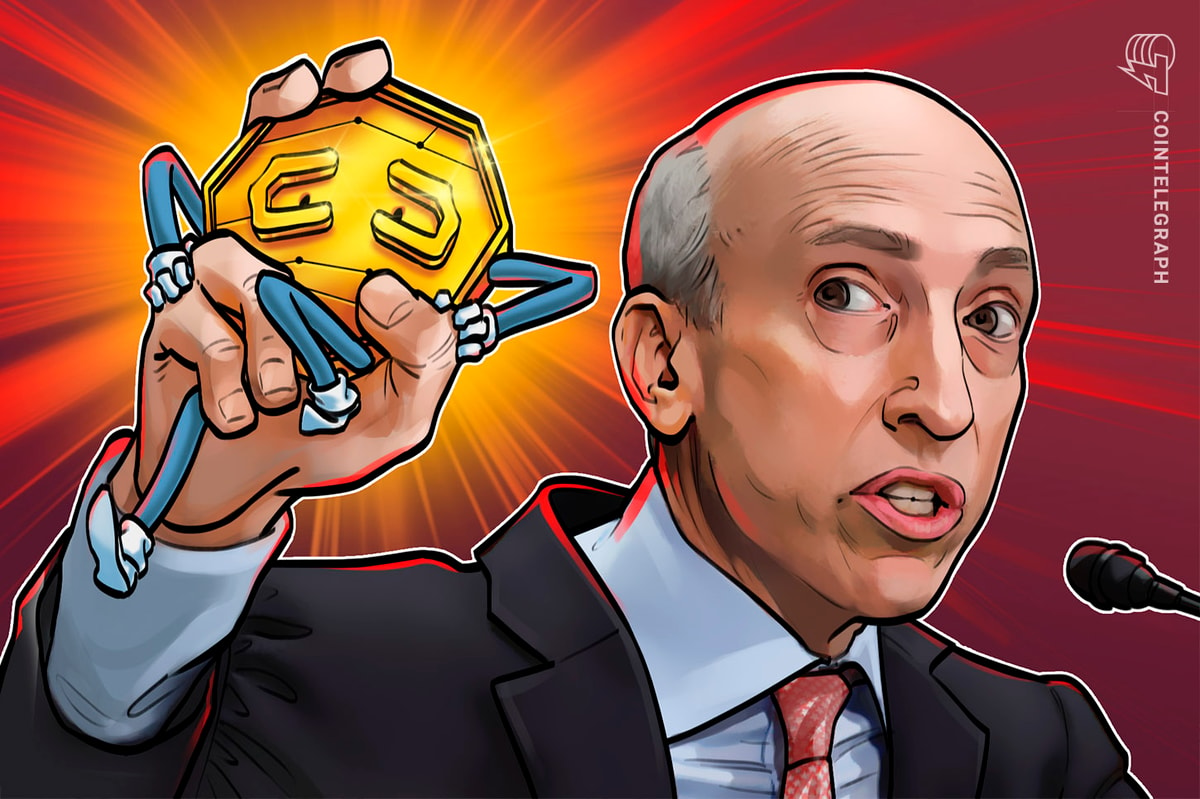FOMC preview: Will there be clues about cuts?
8 min read

The Federal Open Market Committee is
“No change in interest rates is expected at this meeting, but market observers will be watching closely for clues as to changes in messaging,” said
Specifically, she said, Fed watchers will look for signs of policymakers’ confidence that inflation is heading toward 2% “significantly enough to merit a
The Fed is risking a policy mistake by waiting to cut rates, according to Ragan. “There is a fine line between a soft landing and a recession.”
He sees a soft landing as real gross domestic product growth settling below the pre-pandemic trend of 2.3%. Should growth fall to into a “1% to 2% range, how long can it stay there?” he asks, and does it go up or down from there?
Consumer spending has moderated, with buyers conscious about higher prices, which could diminish companies’ ability to raise prices.
“Slowing but positive spending could evolve into something worse,” Ragan said. “We are watching labor statistics for clues, including the weekly jobless claims. Many believe the Fed should pre-emptively cut rates in July.”
Last week’s stronger-than-expected GDP report means the Fed is “more comfortable waiting for now,” he said. Also, since the Fed doesn’t like to surprise the market, Ragan said, “the chances of a surprise in July (such as a rate cut) is very low. While the Fed would act quickly if the data changed, that is not the case at this meeting.”
Ragan expects cuts in September, and likely also in November and December. If GDP trends lower, it “would likely lead to more rate cuts than expected, but this would be a reaction to weak economic data and signify a recession watch,” he said. “This remains a risk in our view.”
While data suggest “inflation is moving in the right direction,” there are also “mounting risks that policy rates may be too high, potentially slowing the economy more than intended looking ahead,” said
“We anticipate this will be reflected in the upcoming FOMC meeting. From a real interest rate perspective, the Fed’s monetary policy stance has tightened in recent months due to cooling inflation. While the statement will likely receive some form of an upgrade in this direction, we do not consider current labor market conditions weak enough to warrant adjusting policy rates.”
As a result, the post-meeting statement may not include the word “soon,” Scherrmann said. “This message will likely be conveyed during this year’s Jackson Hole symposium in August, potentially setting the stage for a first rate cut later in the year.”
Consumer spending and private inventory investment in second quarter GDP suggests economic strength, said Mercatus Center macroeconomist Patrick Horan, and “that the Fed should avoid cutting its interest rate target prematurely to prevent overstimulation.”
“There is not much of a case for a Fed interest rate cut” at this meeting, he said. Markets have priced in a rate cut in September, Horan said, adding he has “a hard time seeing a case for more than one cut this year, assuming GDP and inflation continue along recent trends.”
Expect more of the same as in June, said Tom Clarke, director of investment research at SignatureFD, “although Chairman [Jerome] Powell may prime the markets more for upcoming rate cuts.”
The risk of delayed rate cuts is “growing,” he said, with the Fed looking to avoid “acting prematurely. Therefore, we expect the Fed will most likely keep rates unchanged at the July meeting until they are confident that any rate cut would be sustainable.”
While the labor market is softening, Clarke said, “it has not deteriorated sharply.” Additionally, inflation hasn’t slowed enough to support a July cut.
The market is pricing in two or three cuts this year. “While we believe the likelihood of 2 or 3 cuts over the balance of the year is high, ultimately it is the Fed and not the market that will make the decision,” he added. Powell called the initial reduction “consequential,” which Clarke said means “the Fed will not want to pause or reverse course once cuts begin.”
Between the July and September meetings, he notes, there will be two months of inflation data released. “As a data-driven body, we expect the Fed will digest all the data it can before acting.”
“Our view remains that the Fed will cut only once per quarter in the quarters ahead,” said Brian Rose, senior U.S. economist at UBS Global Wealth Management. But, if the economy sours, he said, “the Fed could cut much more aggressively.”
“We look for the FOMC to keep its target range for the federal funds rate unchanged at 5.25%-5.50%,” said Wells Fargo Securities Chief Economist Jay Bryson, and senior economists Sarah House and Michael Pugliese.
No consensus for a cut at this meeting exists, they said, “But we think the Committee will signal via its post-meeting statement that a rate cut could come as soon as its next meeting.”
The statement “likely will indicate [the FOMC] has seen more material improvement on inflation in recent months. We also expect the statement to acknowledge the Committee is now attentive to labor market risks as well, rather than focusing solely on inflation risks,” they said.
The elections will not impact a potential rate cut, Bryson, House and Pugliese said. “The historical record shows that political considerations do not seem to enter the FOMC’s calculus.” They see cuts in September and December.
UBS Global Wealth Management expects a soft landing and a September start to rate cuts, said Solita Marcelli, its chief investment officer for the Americas. “Overall, we think markets are underestimating the likely number of Fed cuts over the cycle. Fed officials put their estimate of the longer-run fed funds rate at 2.75% in their latest dot plot projection, compared with around 4% as current market pricing suggests. For investors, this means those holding cash or money market funds need to consider other options for their liquidity, including bond ladders, structured investment strategies with capital preservation features, and a diversified fixed income allocation.”
But “a convincing case” can be made for a July cut, said Matthew Weller, global head of research at StoneX. “But after months of setting up September as the start of the rate cutting cycle, there’s essentially no chance that Jerome Powell and company jump the gun this month.”
With jobless claims on an upward trajectory “and the potential (likelihood?) that the
Also core personal consumption expenditures remains “incrementally stickier than the Fed would prefer in an ideal world” and “real” after-inflation interest rates are climbing, Weller noted, “making policy incrementally tighter as the U.S. economy shows signs of downshifting in the second half of the year.”
The Fed appears poised to wait “too long to start cutting interest rates, raising the likelihood that it will have to cut more aggressively to make up for lost ground later this year or in 2025 if the economy continues to slow,” Weller said.
Last week’s data “was just slightly worse than expected and what the Fed and the market would ideally want,” said Greg Wilensky, head of U.S. fixed-income at Janus Henderson Investors, but still sets the stage for a September cut and a soft landing.
Wilensky expects a “dovish hold” at this “meeting with Powell signaling during the press conference that a first cut is likely to occur ‘fairly soon’ if the data continues to evolve as they expect.”
Still, he notes, with lots of data before the following meeting, “a September cut is far from a certainty. This could drive market volatility, but the bar for the Fed not to cut in September continues to get higher.”
This meeting could “confirm” a September move, said Subadra Rajappa, Societe Generale head of U.S. rates strategy, “but not pre-commit to a cadence of cuts thereafter,” which means the market has overpriced easing.
But, if inflation doesn’t moderate further, she said, “markets may have to readjust their pricing of the pace of further rate cuts.”
Rajappa expects “a more calibrated approach than a more traditional rate-cutting cycle.”
While it’s “highly unlikely” the Fed will cut rates this week,
He pointed to core PCE “on a path toward 2%” and decelerating employment to support his view. “It should be easier for Powell to justify reducing the amount of monetary restraint given the current balance of risks,” Pzegeo said. “It’s possible that the FOMC statement changes at the margin, but the bigger clues are likely to come during Powell’s press conference.”
The
The three-month average change in the core PCE price index in June “consistent with the Fed’s 2% target,” they said. “If the current trend continues, core inflation will be in line with the Fed’s forecast at 2.8% by December 2024 and fall quickly to 2.3% by mid-2025.”
They expect Powell to provide “some forward guidance for a rate cut in September.” If inflation moderates according to the three-month trend, they said, “it’s possible that the Fed would be able to reduce policy restrictiveness in September. However, if the path proves choppier, a rate cut in the near future is more uncertain.”
With unemployment rising, policymakers will see it “as the labor market coming into better balance,” rather than signaling “an imminent recession, as some investors have claimed.”
The Fed will continue to focus on inflation, they said, “unless the unemployment rate begins increasing rapidly (which we are not expecting to happen).”
The Fed is in no rush to ease, they said, and will likely just fine tune rates. “So, market expectations for seven cuts through 2025 are probably too aggressive.”
“The Fed might adopt a more dovish tone at this week’s meeting, reflecting recent comments and weakness in U.S. data,” said Fawad Razaqzada, market analyst at Forex.com.
“While the disinflation process has been painfully slow, the fact that the unemployment rate has been climbing should start to worry some Fed officials that the current policy is far too restrictive than needed,” he said.
He pointed to the unemployment rate, which at 4.1% is above what the Fed expects at yearend, and other data that show a softening jobs market.
“By holding policy excessively tight while the rest of the world’s other major central banks are loosening policy (outside of Japan), the Fed might be causing an unnecessary economic strain, which it will want to avoid given its mismanagement of inflation and interest rates,” Razaqzada said.
Should the Fed sound dovish, the market could price in three rate cuts this year, up from the approximately 68 basis points of cuts priced in, he added. “That, in turn, should boost the gold outlook as investors drive bond yields further lower.”







